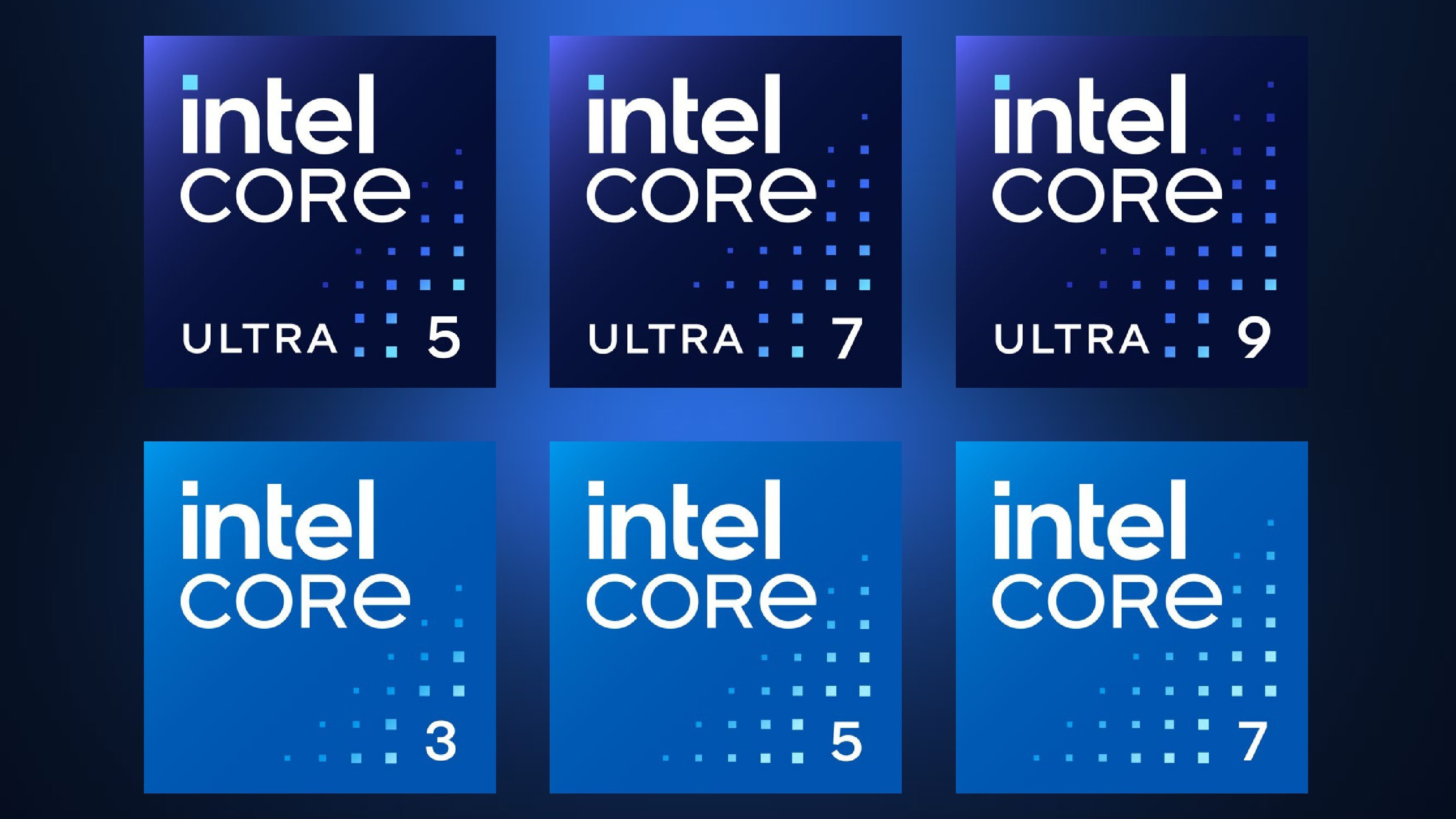
Intel announced today that it is overhauling its consumer CPU branding for the first time in 15 years, resulting in a simplified naming scheme that looks somewhat similar to AMD’s Ryzen naming scheme. Intel’s new approach focuses on its ‘Core’ branding and splits the chips into ‘Core’ and ‘Core Ultra’ tiers. It also drops the iconic ‘i’ from the i3, i5, i7, and i9 chip identifiers and no longer refers to its processors with a generation moniker, like ‘13th-Generation.’ It also includes new badges, all of which we’ll cover more below. These changes begin with the Meteor Lake processors that come to market later this year but don't apply retroactively to existing chips.
Intel’s announcement comes after the new chip naming scheme emerged a month ago when new ‘Ultra’ badged processors were listed in processor benchmarks on a public database. Intel’s latest rebranding follows other retoolings of its public image, such as changing the iconic Intel logo and jingle, with the latter receiving more than a fair bit of negative feedback. Intel has also recently discarded other Intel hallmarks, like the Pentium and Celeron brands that were once household names. That change also wasn’t well received.
Intel says the Meteor Lake chips are “an inflection point for design, manufacturing, and architecture and delivers significant advances for our company and customers,” and that the changes are the result of customer requests to simplify its brand.
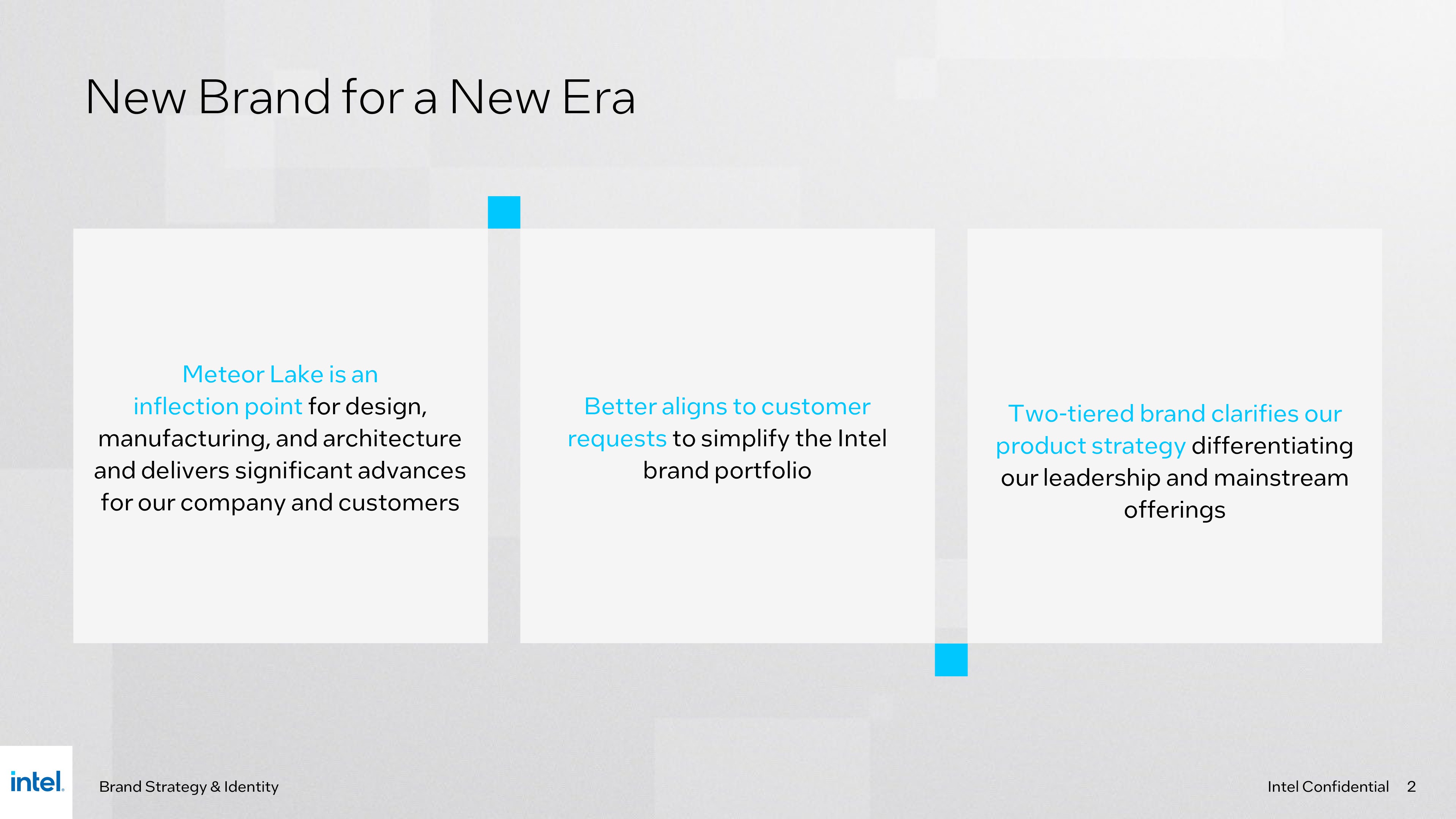
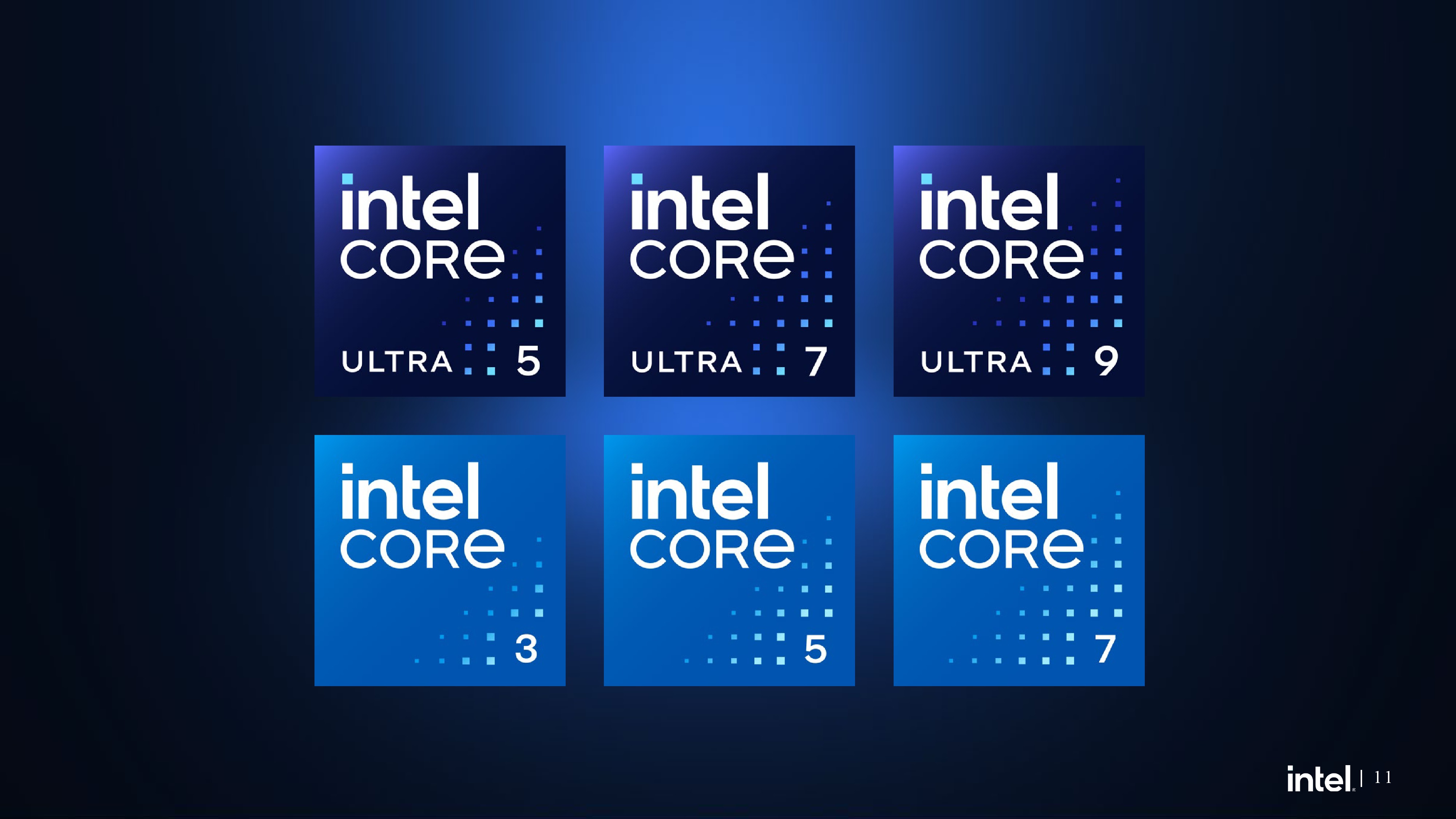

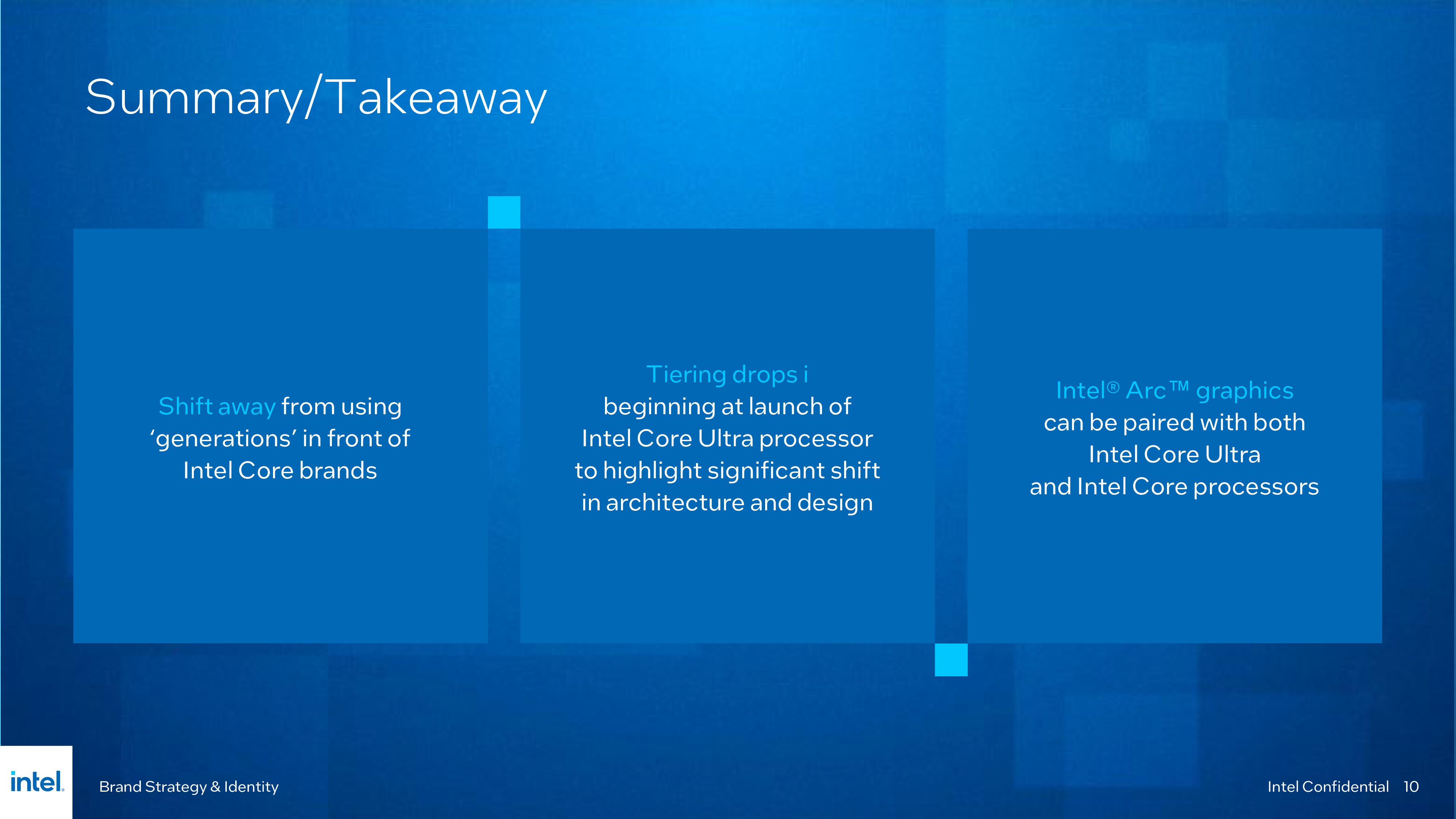
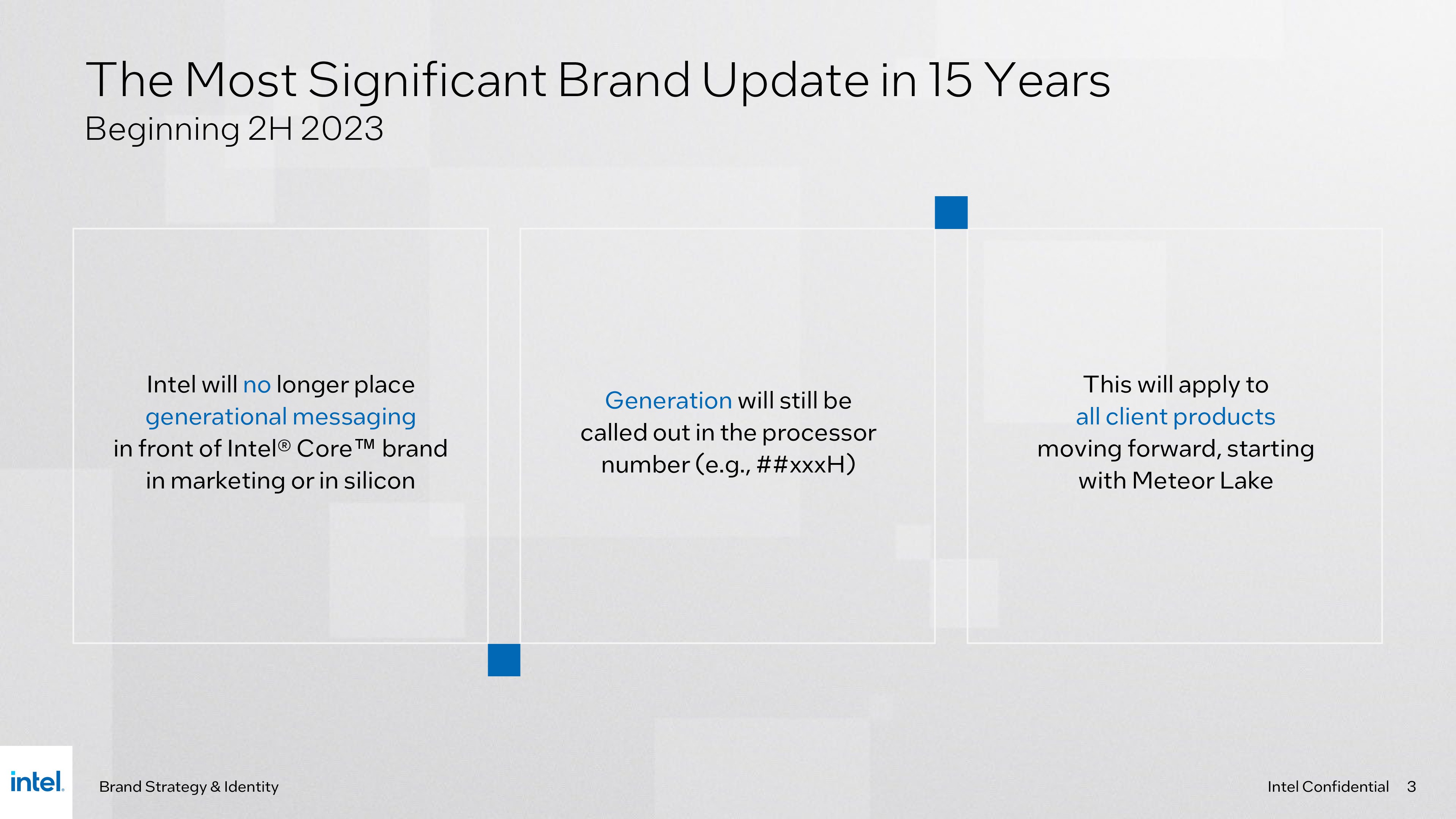
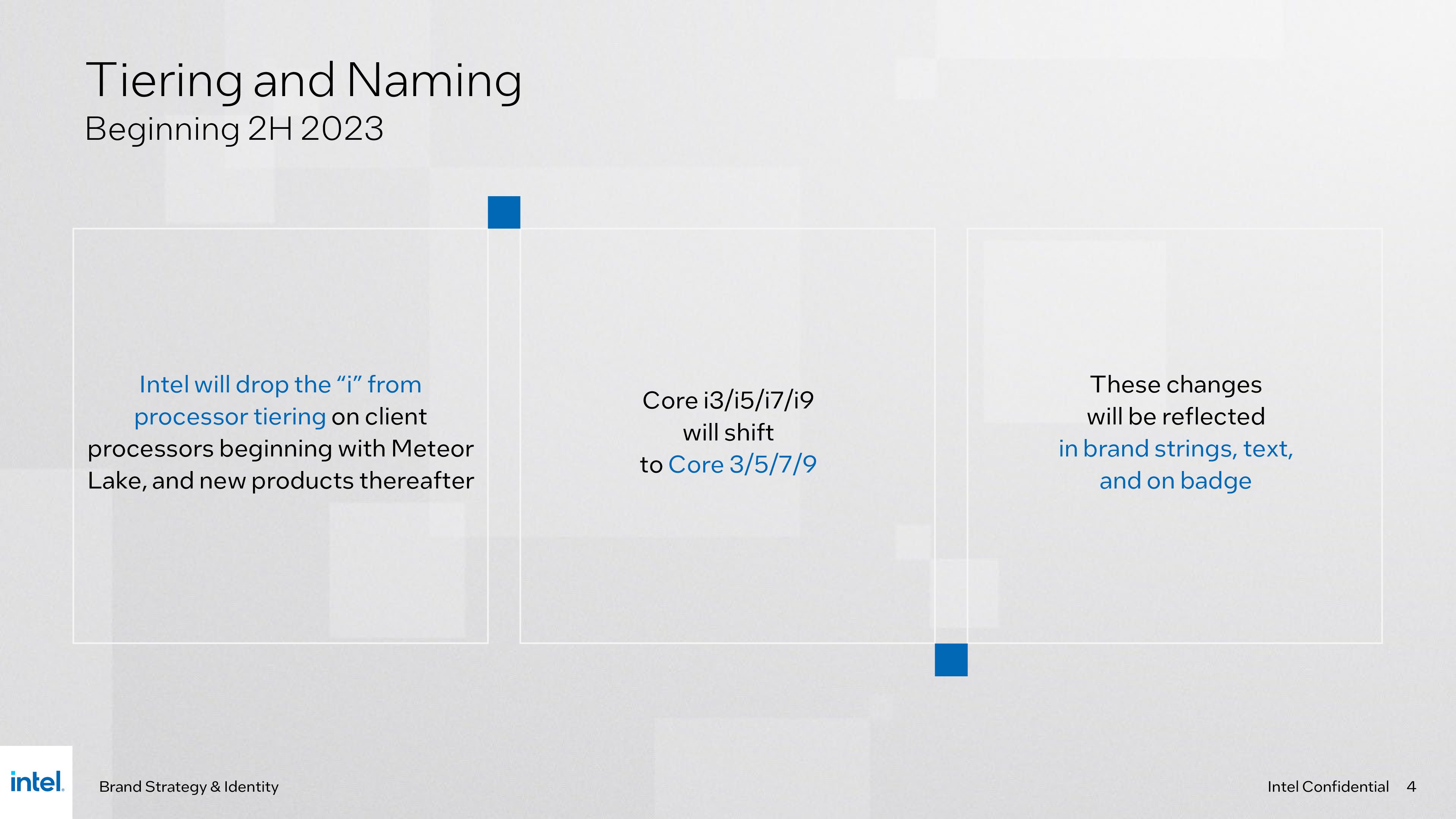
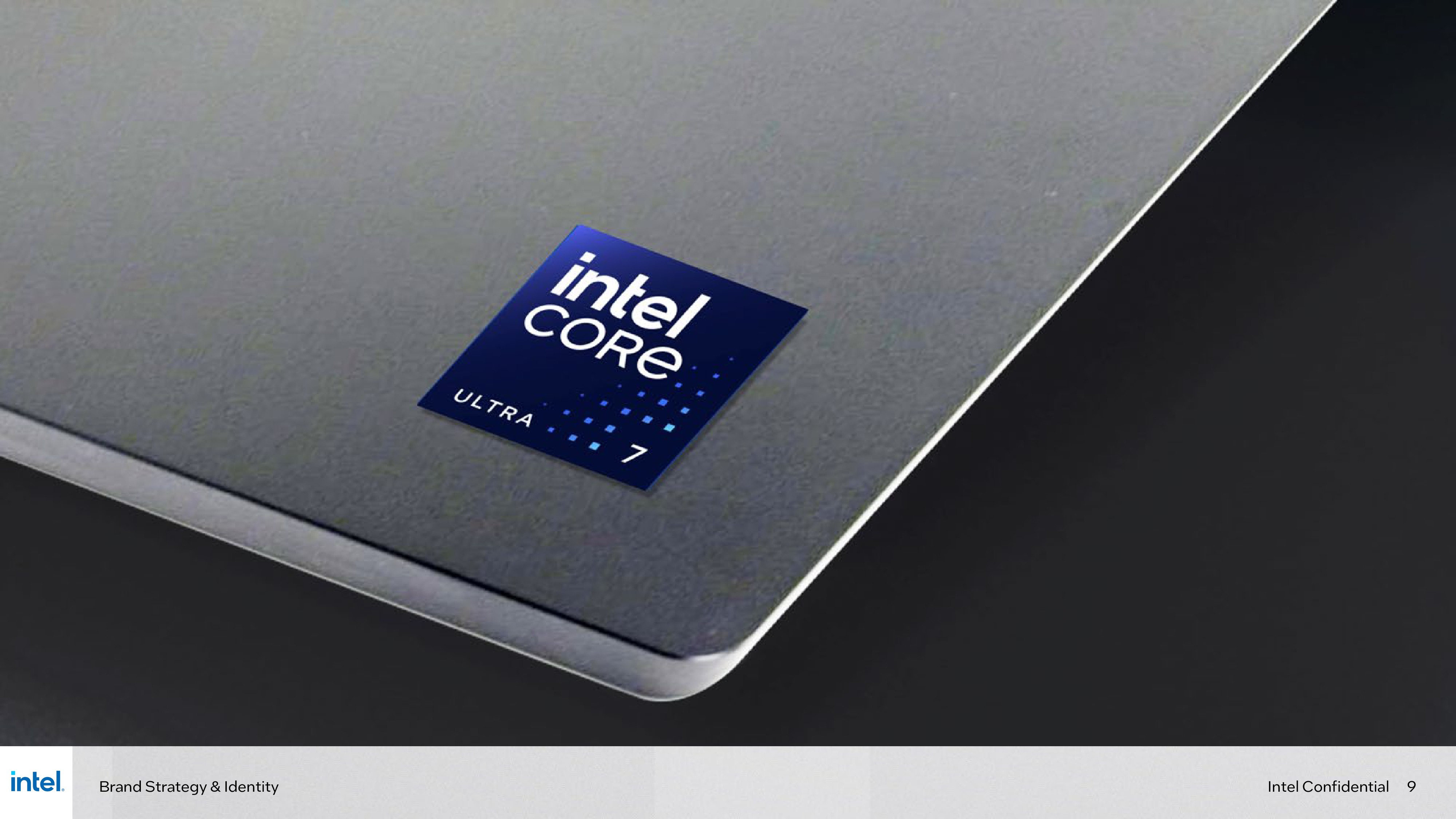
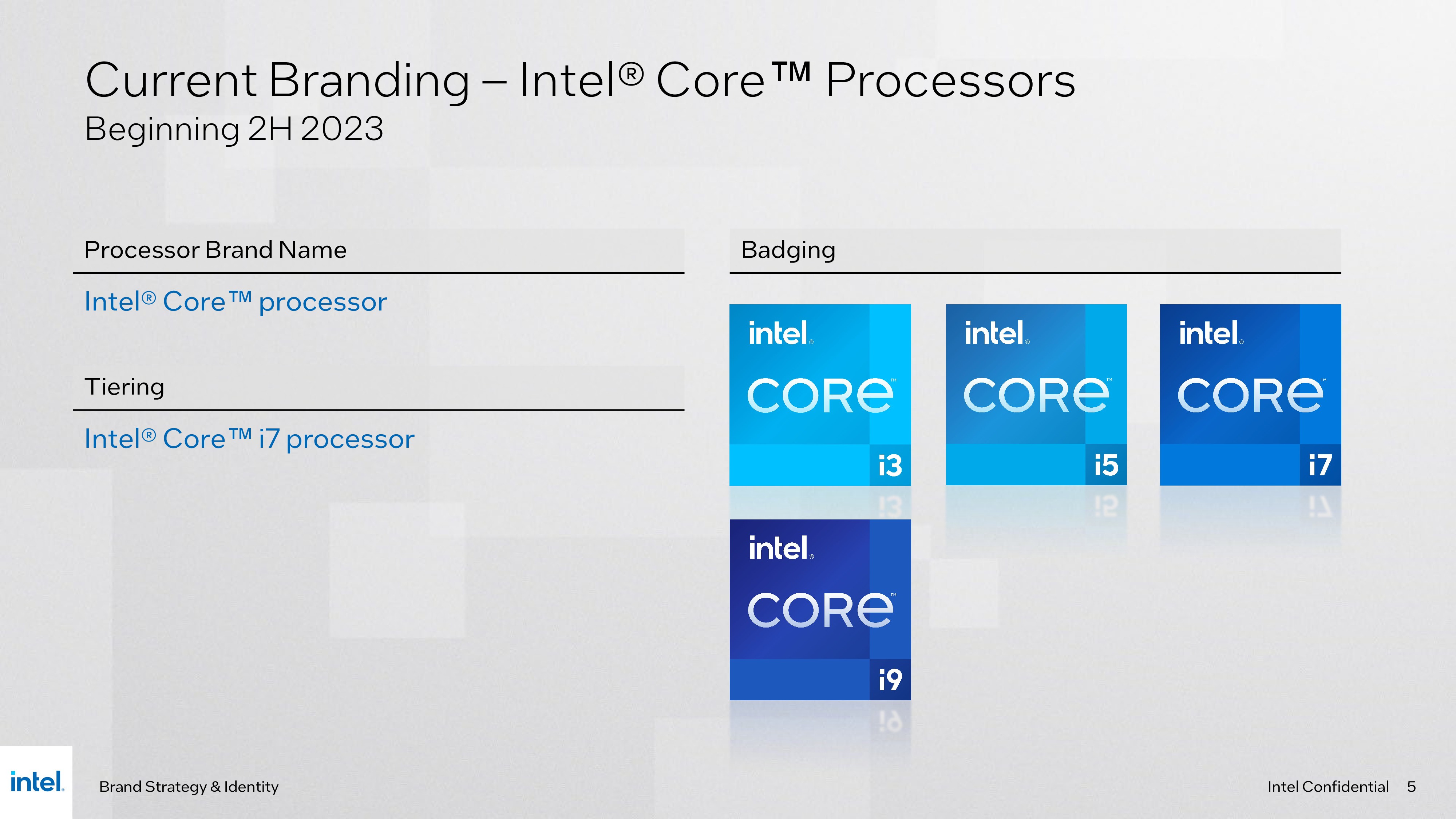
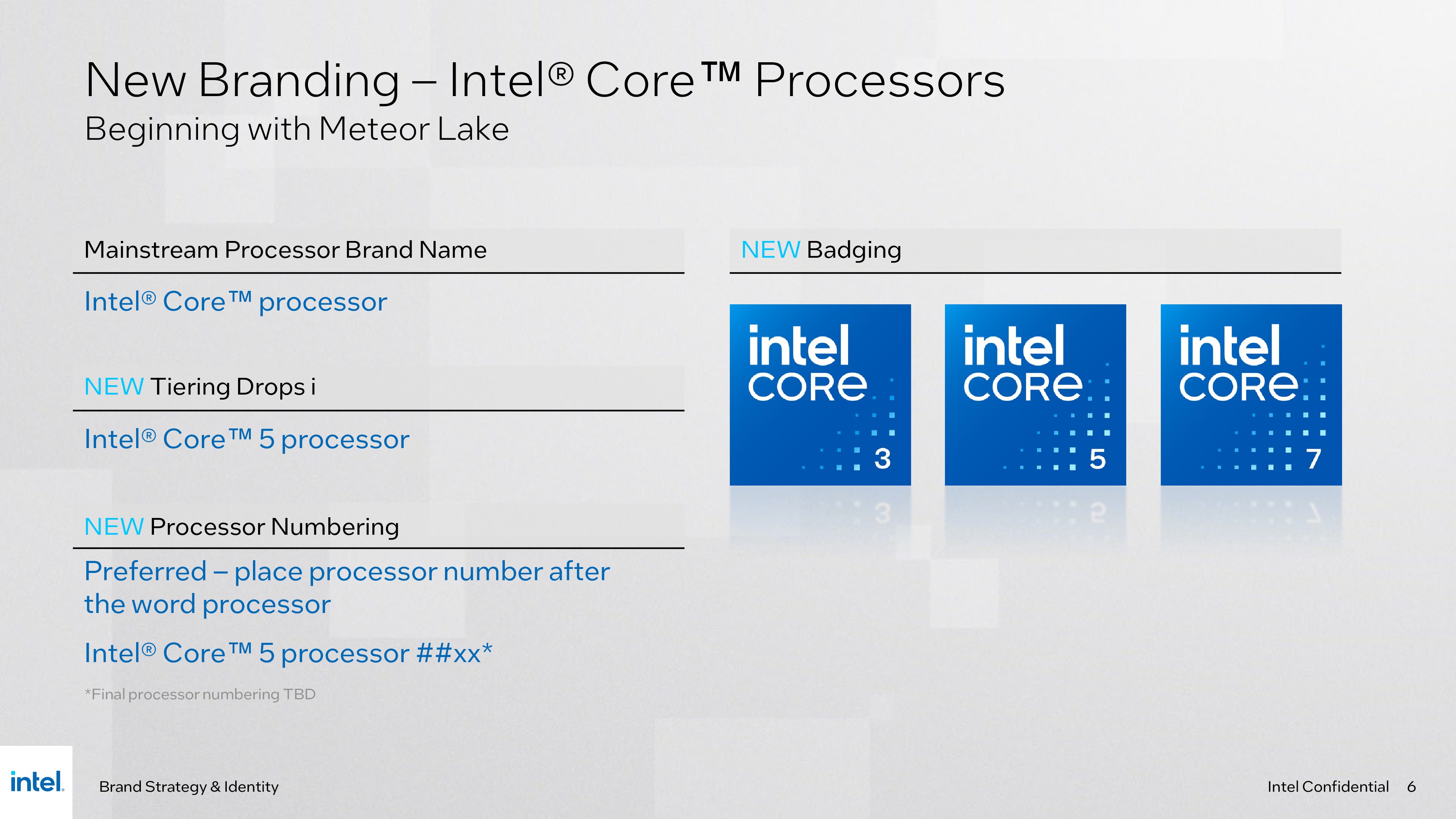
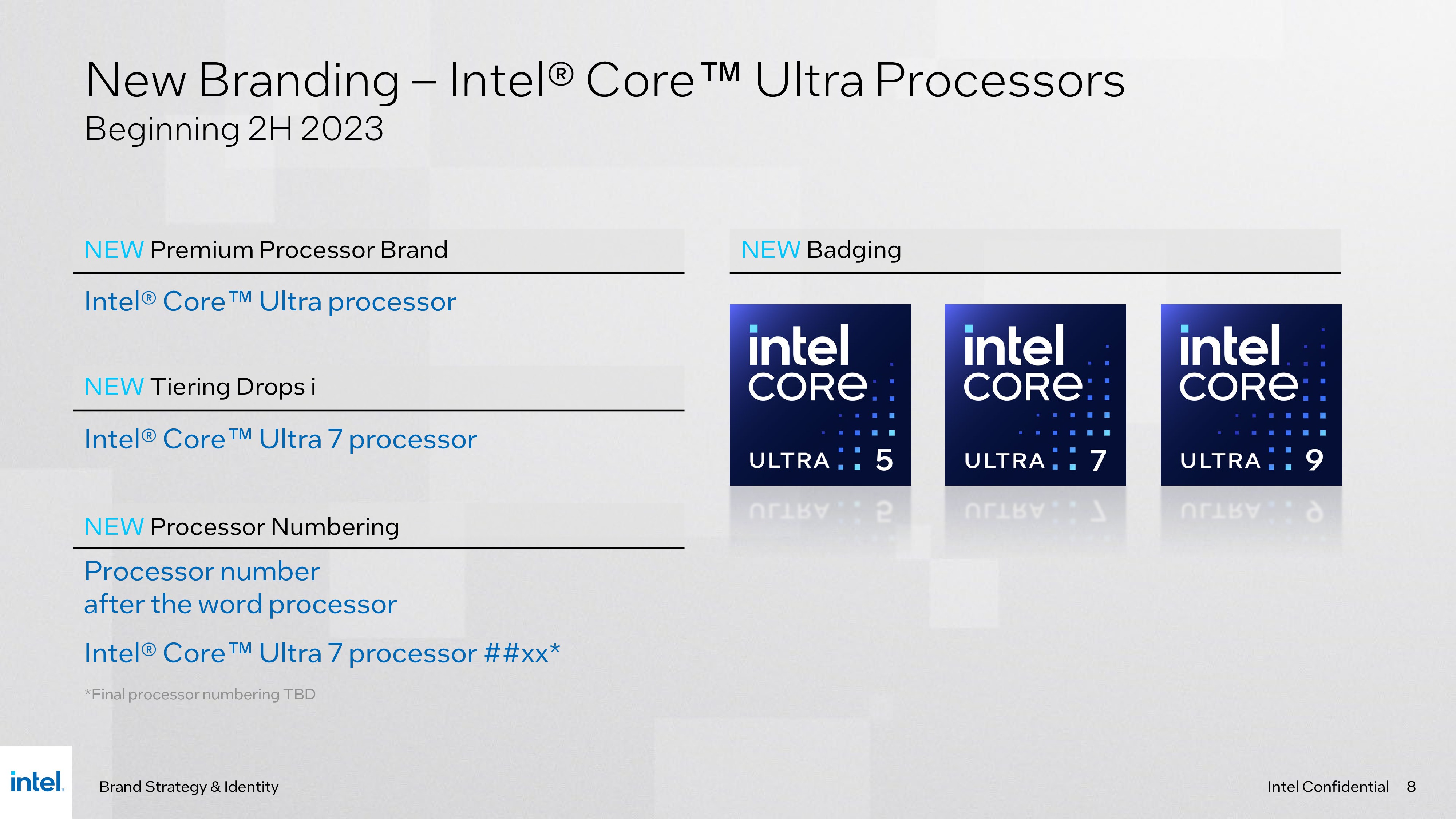
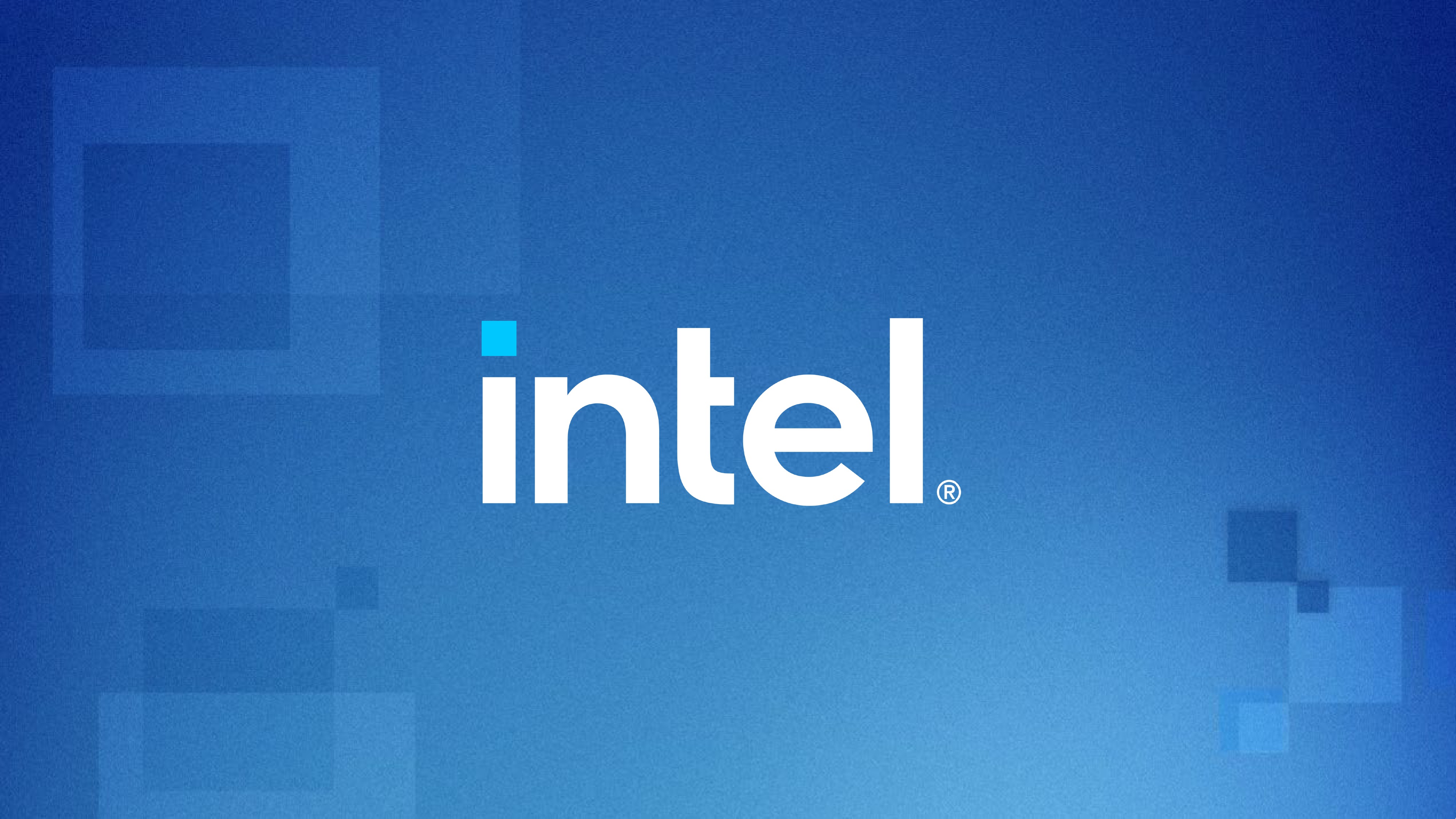
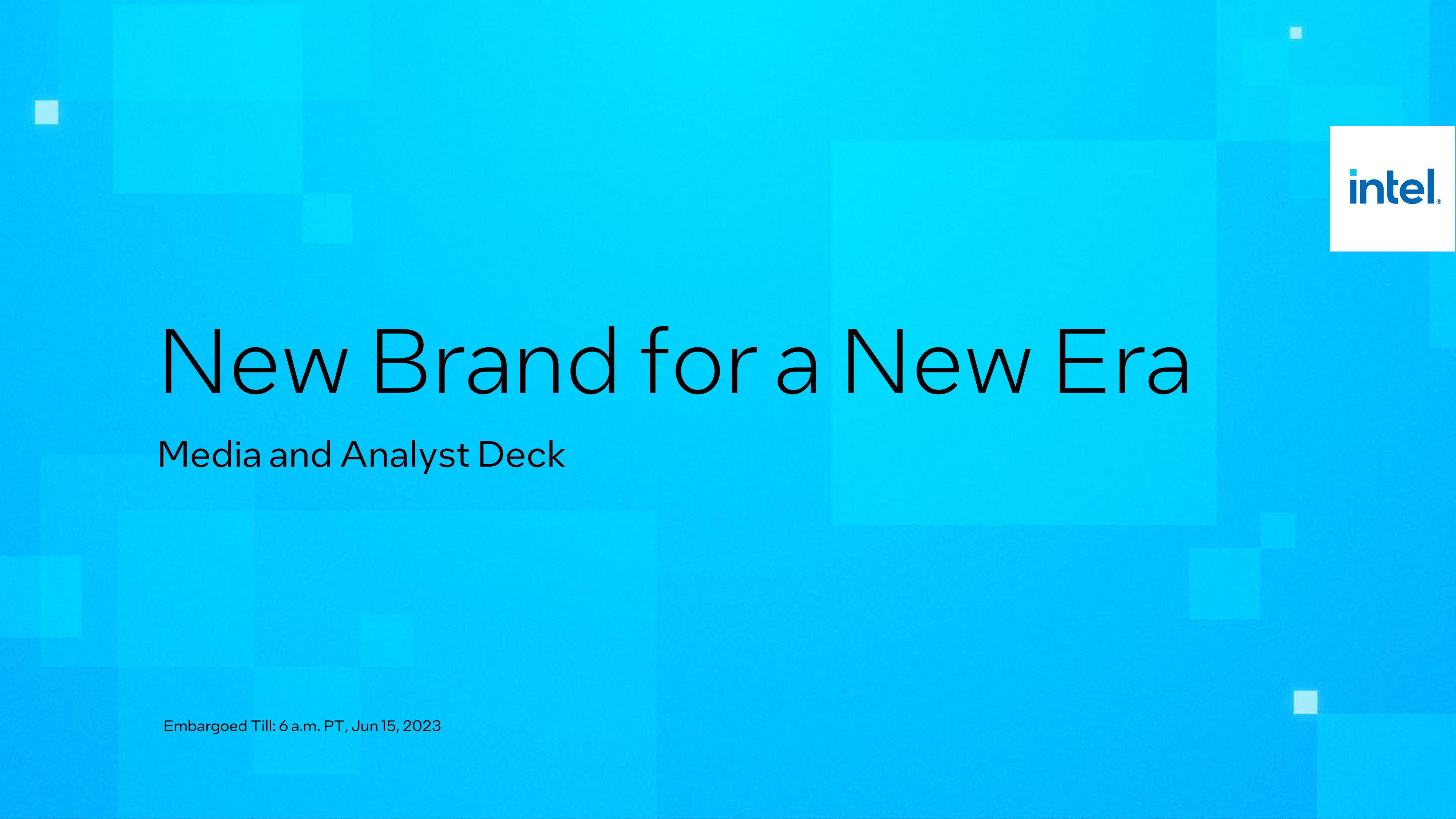
Intel will now split its future chip generations into two tiers: 'Core’ mainstream models and ‘Core Ultra’ premium chips, with the latter indicating a higher tier of performance. Intel has also dropped the generation designator from its brand name, but you can still easily decode that from the product number. For example, the ‘13’ in 13900K indicates the chip is a 13th-Generation model, and that portion of the naming scheme will remain consistent with the coming generation. Intel also has new badges, which you can see in the above album.
Perhaps the biggest outward change is the decision to drop the ‘i’ from the Core i3, i5, i7, and i9 lines. Here's a mockup of how the old branding would have looked for the coming 14900K chips, and a few examples of how it will look under the new official scheme:
- OLD: Intel 14th-Generation Core i9-14900K Processor
- NEW: Intel Core Ultra 9 processor 14900K
- NEW: Intel Core 9 processor 14900K
- AMD: Ryzen 9 7950X
As you can see, Intel also includes the word 'processor' in the official product name. This is technically already present in the current branding scheme even though absolutely no one uses it in common usage -- even Intel doesn't. However, now Intel inexplicably injects the word between the family designator (Core 9, Core Ultra 9, for instance) and the model number, instead of at the end of the name.

We asked Intel's brand team about this, and they said they 'prefer' for the term 'processor' to be used, but that the real focus is on the 'Core' and 'Core Ultra' branding. Given that even Intel itself doesn't use the existing 'processor' designator already, we doubt that the new superfluous 'processor' portion of the branding will catch on. Here's another mockup, but this time of how the branding will look in common usage:
- OLD: Intel 14th-Generation Core i9-14900K
- NEW: Intel Core Ultra 9 14900K
- NEW: Intel Core 9 14900K
- AMD: AMD Ryzen 9 7950X
Make no mistake, this will probably be the most common usage you'll see in reviews and in general reporting. As you can see, without 'processor' injected in the brand string, Intel's new mainstream chip branding is very similar to AMD's Ryzen branding. Yes, the Core Ultra-branded parts will have the extra bit of 'Ultra' to differentiate, but the new scheme feels very Ryzen-esque without the 'i' in Core i9. More on that below.
Intel hasn’t confirmed yet, but we do know from a mountain of external evidence that its next generation of chips will have two swim lanes — processors based on Meteor Lake, a totally new 3D-stacked design with a new microarchitecture, and the Raptor Lake Refresh models, which use the same design and microarchitecture as the currently-shipping processors but have extra tuning to improve performance.
We spoke with Intel’s branding team and asked if the new Core Ultra branding will apply to the newer Meteor Lake models while the refresh models will fall under standard Core branding, and/or if the overclockable K-series processors would be confined to Ultra-branded products only.
Intel didn’t confirm that only Meteor Lake chips would only be marked as Core Ultra but did say that tier ‘represents the latest innovations’ and that they would share more details soon. That means it is at least a rational assumption. However, the representatives did say that overclockability (K-series) isn’t a requirement for a chip to be branded as Core Ultra.
Thoughts
It is certainly a bold yet questionable decision to remove the branding that hearkens back to when Intel had a near-monopoly on the market and was the unquestioned performance leader for over a decade. The perception that Intel is diluting the hard-fought brand recognition built during those years is obviously going to be present, regardless of the market studies that Intel tells us it used to inform the decision.
Intel’s branding change will certainly be confusing for those that have become accustomed to the naming scheme over the last 15 years, but Intel tells us this change is designed to improve brand recognition with mainstream audiences that aren't tech-savvy. In fact, Intel feels that the 'Core' branding is already, well, the core of its brand equity, so it thinks dropping the 'i' sharpens focus on the 'Core' brand.
Today, Intel and AMD are more closely matched than we’ve seen over the last decade. AMD’s Ryzen processors did temporarily catapult the company back into an unquestioned leadership position, but Intel’s 13th-Generation Raptor Lake restored Intel’s overall lead with the best blend of performance and value for the bulk of the desktop PC market. Yes, AMD's Ryzen 7000 still holds the overall gaming lead with its premium lineup of X3D parts, but they carry a premium that relegates them to the highest-end systems, so they aren’t for most users.
That makes the timing of Intel’s rebranding even more confusing. It certainly isn’t uncommon for an underdog to adopt a similar branding scheme as the incumbent, often to leverage the better-known product branding from the dominant player to further their own brand — that’s exactly what AMD did when it launched its Zen-powered processors with a very familiar Intel-like Ryzen 3, 5, 7, and 9 scheme. In fact, AMD even adopted a very similar motherboard chipset branding to Intel, too.
Intel is certainly back on the upswing in the desktop PC market, but the optics of discarding the familiar 'i' portion will be sure to generate plenty of criticism. Though it probably wasn't intentional, some will also insist this looks like AMD's branding scheme for Ryzen. But, as mentioned, AMD first adopted an Intel-like branding scheme, making it hard for Intel to simplify its branding without ending up with a similar-looking approach.
Intel says it isn't sharing all of the details of the new branding scheme yet, and its slides indicate that it is still in the decision-making process on some of the details. That seems a bit dubious, given the proximity of the Meteor Lake launch later this year — surely these decisions have already been made. In either case, we'll learn more about the branding scheme when Meteor Lake arrives later this year.







